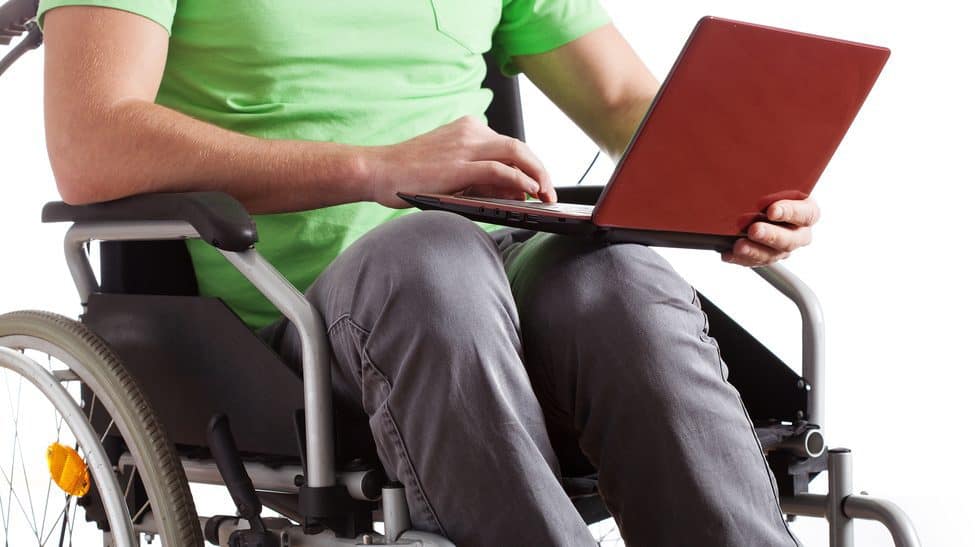Here’s How You Can Show Solidarity to Disabled Classmates
Back-to-school season can be a stressful time for members of the disability community, especially those who are entering new schools and new phases of their educations. Inaccessibility is a constant problem on campuses, and that doesn’t just include physical access issues like stairs, lack of interpreters, and unusable bathrooms. It also includes a campus climate hostile to disabled people, from professors unwilling to make accommodations to classmates who make thoughtless and sometimes cruel comments.
If you’re nondisabled and wondering how you can work in solidarity with disabled classmates — or disabled and interested in cross-disability advocacy — there are a lot of ways, from small to large, that you can make people more welcome on campus and in the classroom.
I talked to lots of current and former disabled students, as well as teachers, about their classroom experiences to learn more about things that helped them and things that didn’t. The most important bottom line, though, was this:
If you want to help someone, ask.
Every disabled person is different. Something that one person really appreciates will be actively unhelpful for someone else. Acknowledge that you see someone and are ready to help if they need it, but don’t force the issue.
Shelby Hintze commented that subtle help from her classmates made it much easier to accomplish activities at school without being singled out. People who offered to grab supplies or assist with getting things out of a bag or backpack made Hintze feel more at home in the classroom. “It’s exhausting to always ask for help so just be aware and say something like ‘hey, can I turn that in for you when I take up mine?”
Many of the people I talked with said they appreciated accessibility assistance and callouts, like moving obstacles so people can navigate the classroom freely, making sure there’s a clear line of sight to an interpreter, or making room for someone who needs to sit in the front row.
It’s also possible someone will say “no” to an offer of help, which is okay! Some people don’t need assistance or would rather complete a task in a way that works for them, so your offer of help may be appreciated, but unnecessary. If someone has accepted your help in the past, don’t necessarily assume the same will hold true every time you see them; check in first, unless it’s explicitly clear that your helping out has become part of a routine.
Disabled people also caution that it’s not okay to touch them or their accessibility aids — including service animals — without permission. If you go to school with a d/Deaf or visually impaired student, ask them the best way to get their attention before assuming it’s okay to touch them. In the case of students with mobility impairments, don’t grab them — even if you think they need help! Definitely don’t push a wheelchair or move a walker or cane; you could inadvertently damage someone’s equipment or increase their risk of injury.
Remember also that disability is not always immediately visible, and being disability-conscious all the time, not just when you see someone with a visible impairment, is good practice. If you’re conscientious when it comes to the way you talk about disability, it makes the disabled people around you feel safer and more welcome.
That goes double if you speak out against disablist comments, like dismissals or mockery of invisible disabilities like chronic pain and fatigue. That’s something you should be doing wherever you are if you’re nondisabled. Nondisabled people often assume there are no disabled people in the room, and that it’s “safe” to make inaccurate and cruel comments about disability. Make it clear that around you, it’s never safe to be disablist, because you’ll call people out. While some disabled people feel able to speak up, others do not, and both may appreciate your advocacy in solidarity with them.
Samantha Reid, who has Crohn’s disease, commented that ignorance on the part of her classmates could be frustrating and harmful in school. Reid argues schools should include better outreach and education for incoming students, which is something students themselves can advocate for. Consider asking for a disability lecture series or pushing for the inclusion of disability etiquette guides in orientation material. Ask professors to include disability-related readings so you can engage with the community’s issues in a classroom environment. Call for accessibility committees to play an active role in organizing campus events.
And when the campus disability community stages protests and calls for help, show up. Work in solidarity with disabled students, whether they’re fighting to overhaul a campus building they can’t get into or demanding that professors include consistent accessibility information in their syllabi. Consider joining campus disability organizations if they’re open to nondisabled people, or asking if you can be on their mailing lists so you can keep up with planned actions and events that are open to the public.
The disabled people I spoke to want to be able to focus on learning at school, not stressing out about accommodations or feeling unwelcome in their campus communities. Being proactive about creating space for the disabled people on campus will improve your community, and you may learn some things along the way.
About Rooted In Rights
Rooted in Rights exists to amplify the perspectives of the disability community. Blog posts and storyteller videos that we publish and content we re-share on social media do not necessarily reflect the opinions or values of Rooted in Rights nor indicate an endorsement of a program or service by Rooted in Rights. We respect and aim to reflect the diversity of opinions and experiences of the disability community. Rooted in Rights seeks to highlight discussions, not direct them. Learn more about Rooted In Rights



